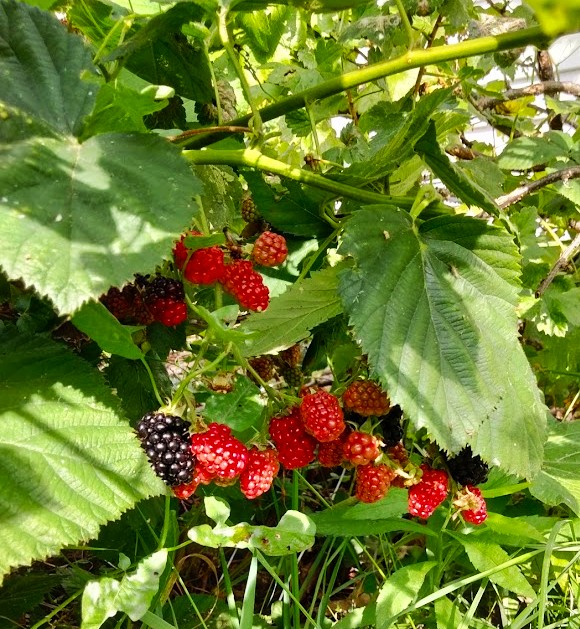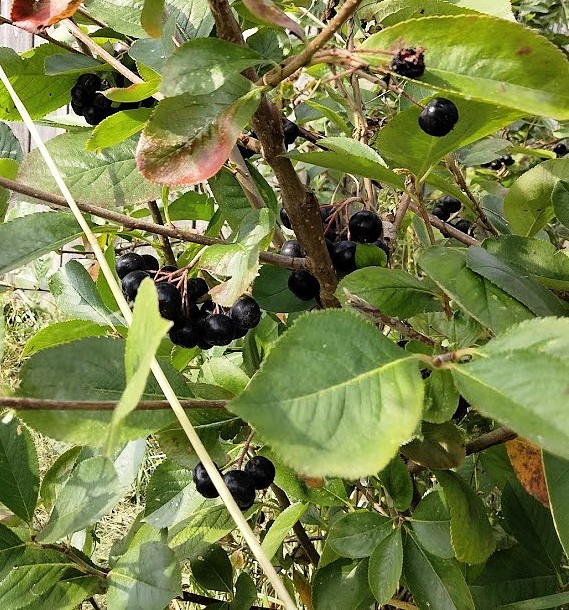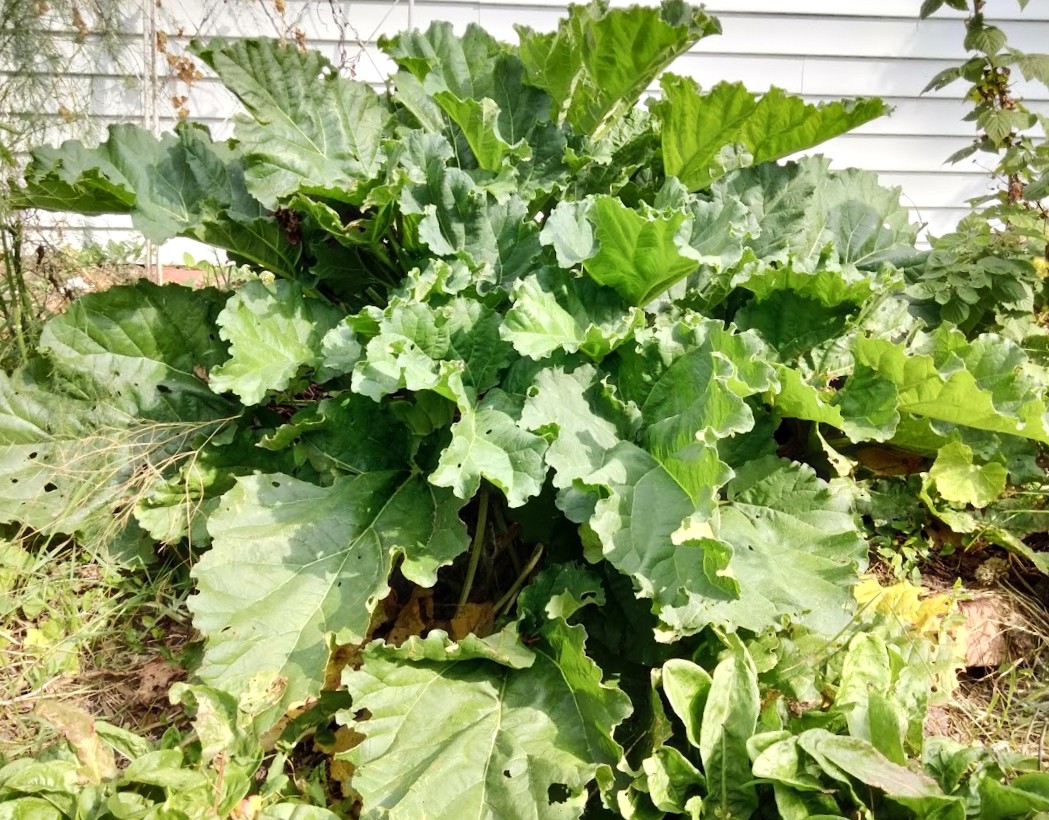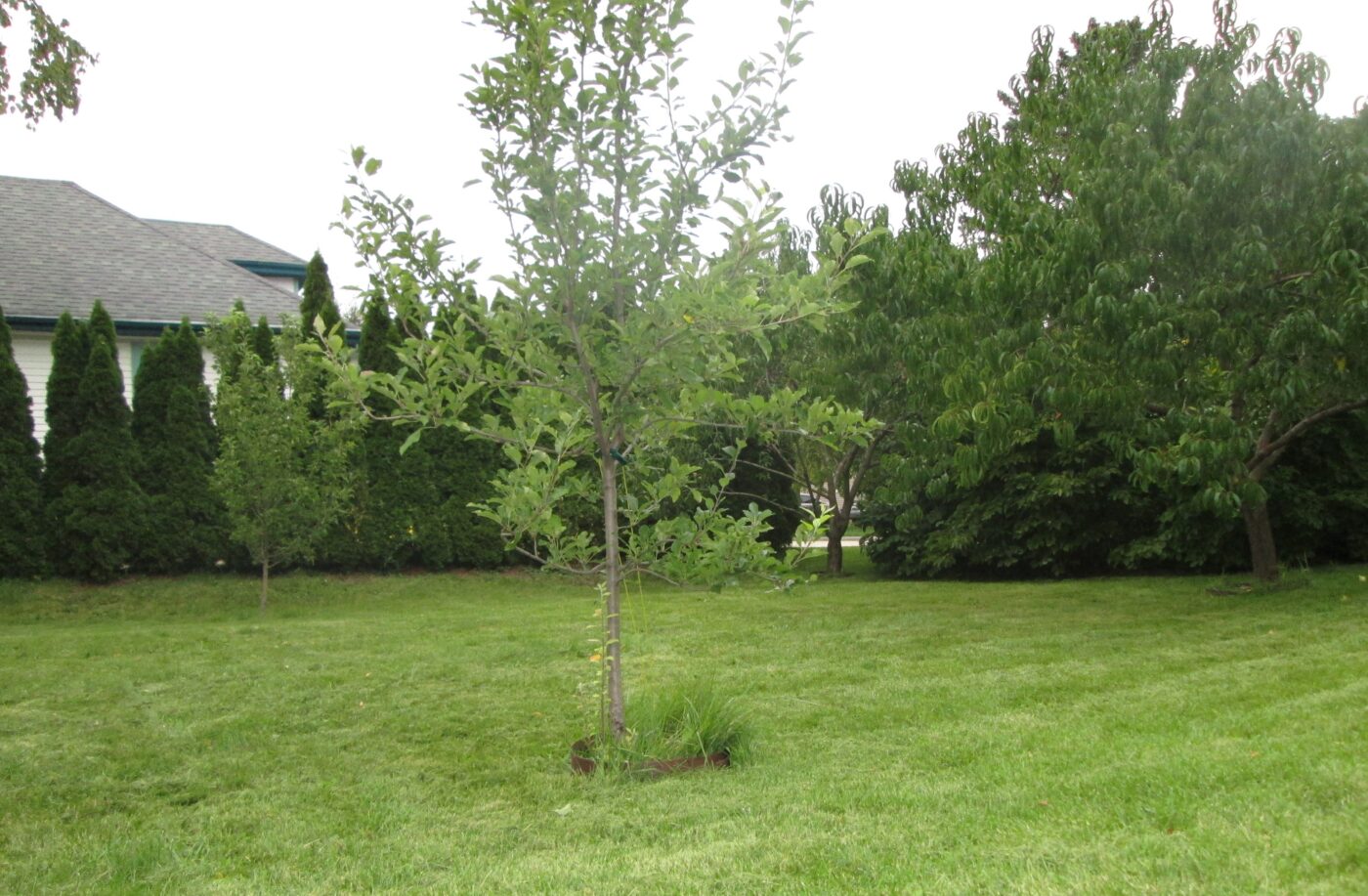
Perennial food gardening is fantastic for busy people who enjoy food picked from their yard but do not have the time to plant and harvest yearly. Perennial food gardening is considered eco-friendly because the deep roots help survive droughts and floods, minimize soil erosion, sequester carbon in the natural soils, and provide food for you and local pollinators (if you don’t use pesticides).
Our Experience
Every week something else is ripe in our garden – and I usually planted it years ago! Many plants grow like weeds, like raspberries (my favorite variety of weeds). Others may take a lot more patience, care and require knowledge, like some fruit trees. This is an investment in time, but it is great to be outside on a nice day tending to a garden. Much of what is written her is from my own experience of perennials that work in the more challenging Chicago area OR from recommended sources specified in the Reference section. Southern climates provide more options than northern climates.
Perennials have the advantage of requiring less care and watering, because they have extensive root systems. They hold dirt in place and help to build soil organic matter, thereby sequestering carbon. Of course, weeding is important for their survival. You may throw weeds back on the same dirt to help build soil organic matter, but if weeds are close to seed, it is better to discard them elsewhere.
Your Choices
Match Your Perennials to Your Environmental Conditions
When you choose perennials to plant, know that you need to consider temperature (winter cold versus summer hot), water conditions (dry, wet, potential pooling), light (full sun, partial sun, shade), pH (normal, acid, alkaline), and soil conditions (sandy, loam, clay, mix). My favorite reference is Growing Perennial Foods, which is a great introduction to new perennial gardeners. This text also explains survivable conditions for the various fruits and vegetables.
Plant Perennial Herbs
Perennial herbs that tolerate colder winters include: chives, lavender, mint, parsley, sage, sorrel and thyme (Tucker, 2019). Herbs that grow as perennials but do not tolerate colder winters additionally include basil, lemon balm, oregano, and rosemary. Some herbs can be grown in flower boxes, although be sure to continually water them early next spring to ensure survival.
Mint: This grows like a weed, and can take over your garden. It is better to put it in a flower pot or shady area. It is used to repel ants, flies, mice and rats. Use fresh or dry in teas or other recipes. We use mint tea to help calm a bloated stomach.
Chives: A type of oniony grass, offers white or purple flowers to attracts bees. It also serves to repel pests (including aphids) from companion plants.
Sage: Grows in a nice small bush, returns even in cold temperature northern states.

Plant Perennial Berry Bushes
Perennial berry bushes include: blackberry, blueberry, currant, gogi berry, grape, huckleberry, raspberry, strawberry (Tucker, 2019). Raspberries and blackberries prefer colder climates.
Raspberry: Grows like weeds – very, very tasty weeds. Easy care but you do need to weed or you may lose your bushes. Different varieties deliver different color berries at different times. Black raspberries are native to America, grow to 3 to 6 feet, and tolerate sun and shade and varying precipitation.
Blackberry: May need to tie up to a trellis support their branches. Also, older branches no longer produce and must be cut down.
Blueberry: Best growth in acidic soils.
Chokeberry or Aronia: A very healthy and prolific bitter berry with dark blue outside and staining red inside. (Photo shown above.) The bush is attractive with full shiny green leaves that can be trimmed as a hedge. Purple and Black chokeberries are native to America and can grow to 3 to 12 feet, depending on species. They like sun to partial shade, and prefer wet environments, with some species tolerating dry conditions. We dry and use berries as an herbal tea or use fresh in smoothies adding something sweet.
Currant: Very productive plant with small, sour berries. Berries may be good to dry for teas or juice. They tolerate full sun or partial shade.
Elderberry: This native American plant provides small berries used in natural cough medicines for its immune-enhancement properties. The bush grows to 5-6 feet in full sun to partial shade environments. Elderberry is not a full bush and does not tolerate dry conditions.
American Carnberry-bush: This native tolerates full sun to partial shade and grows to 8-12 feet. It prefers wetter instead of dry conditions.
Wild Plum: This native American plant can grow to 15 to 25 feet with sunny to partially shady environments. Wild Plum can tolerate dry to wet conditions.
American Hazelnut: This native American plant can grow to 6 to 10 feet as a hedge or full bush. It does not tolerate dry conditions. Squirrels love them and unfortunately beat me to the nuts.

Plant Perennial Vegetables
Perennial vegetables include: garlic, radicchio, sunchoke, walking onion, and watercress (Tucker, 2019). Additional perennial vegetables that do not tolerate cold winters include: artichoke, beans (Scarlet Runner), peppers, sweet potatoes, spinach, and tomatoes. Additional perennials that require cold winters include asparagus and rhubarb; broccoli prefers cooler summers.
Rhubarb: Reliably returns every year. Leaf stalks are edible while leaves are poisonous. Stalks may be green or red, depending on variety. Stalks should be at least 1-1.5 foot long for harvest. For leaf productivity, it is important to remove emerging flowers and their stem. I harvest about once a month in summer, taking only a portion of the leaf stalks. An easy soup recipe is to chop stalks in one inch pieces, and boil until pieces fall apart. Sweeten the soup, then let it cool and add berries and cinnamon or vanilla.
Asparagus: Tricky: plant following directions carefully. Takes about 3 years to establish. Includes (male) spears but also a small tree-like (female) bush. Leave some spears and a tree or two standing for continued survival. Cut at base of asparagus with a knife to harvest.
Sunchoke: Also known as Jerusalem Artichoke, these may be purchased in a food store and planted as is. They grow tasty tubors (underground) that are best dug up after a cold spell, if not just after thaw very early in spring. It is unlikely you will find all the roots and so plants will return yearly. These stalks can reach 6 feet with large green leaves and smaller yellow flowers.

Plant Perennial Fruit Trees
Fruit trees can consist of apple, pear, peach, plum, cherry and in addition in warm weather climates: orange, lemon, lime, mango and more. Fruit trees may require two plants in order to cross-fertilize and produce fruit. Be sure to understand the requirements before you select fruit trees.
Fruit trees take the longest (years) to start to produce, because the branches must be sturdy enough to survive carrying all that fruit. While fertilizing the tree can help, in one case my peach branches were so loaded down with fruit that the neighbors had to prop the branches up so that they would not break. I never used a fertilizer again. In fact, this year I did lose a major branch because it cracked and had to be chopped off. Experts recommend to have each branch only carry a couple of fruits, so pruning fruits can help your tree survive and produce bigger fruit.
Fruit trees may be prone to disease, and therefore require more knowledge in care. It may be smart to pick a tree variety that is healthy in your area, rather than a popular variety. Pruning is recommended in the fall, to get rid of dead branches, or branches that are growing in the direction of other branches. I have paid experts or requested help from savvy neighbors, to help trees flourish. Please also read recommendations under Planting Trees section, which talks about other benefits and care, such as watering and early trunk protection.
References
Morton Arboretum (N.D.) Invasive Hedge and Screen Replacement Guide: Native Shrubs. Morton Arboretum. From: https://mortonarb.org/app/uploads/2024/10/Healthy-Hedges_Invasive-Hedge-and-Screen-Replacement-Guide-Native-Shrubs.pdf
Acadia Tucker (2019) Growing Perennial Foods. Stone Pier Press, San Francisco CA.
